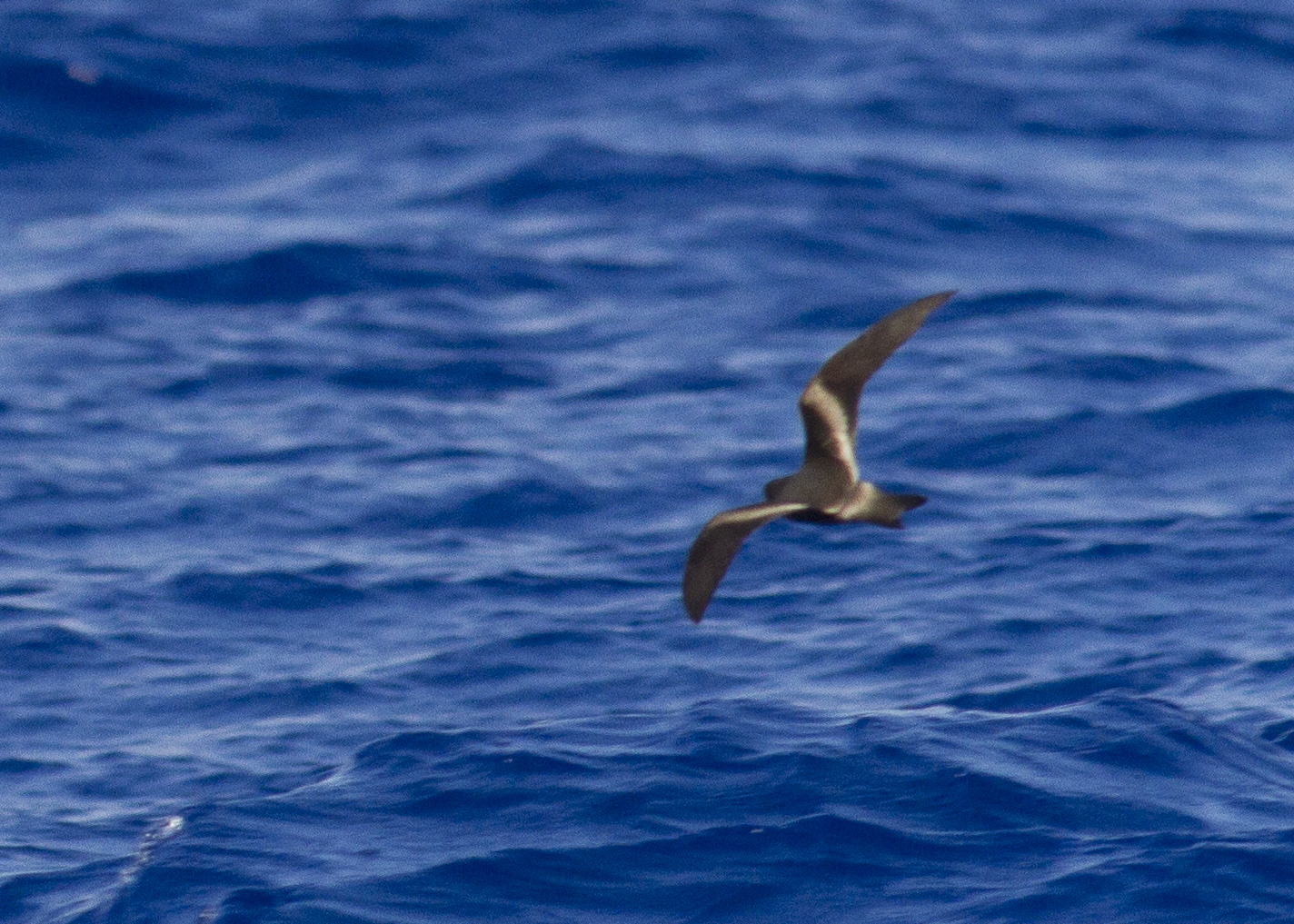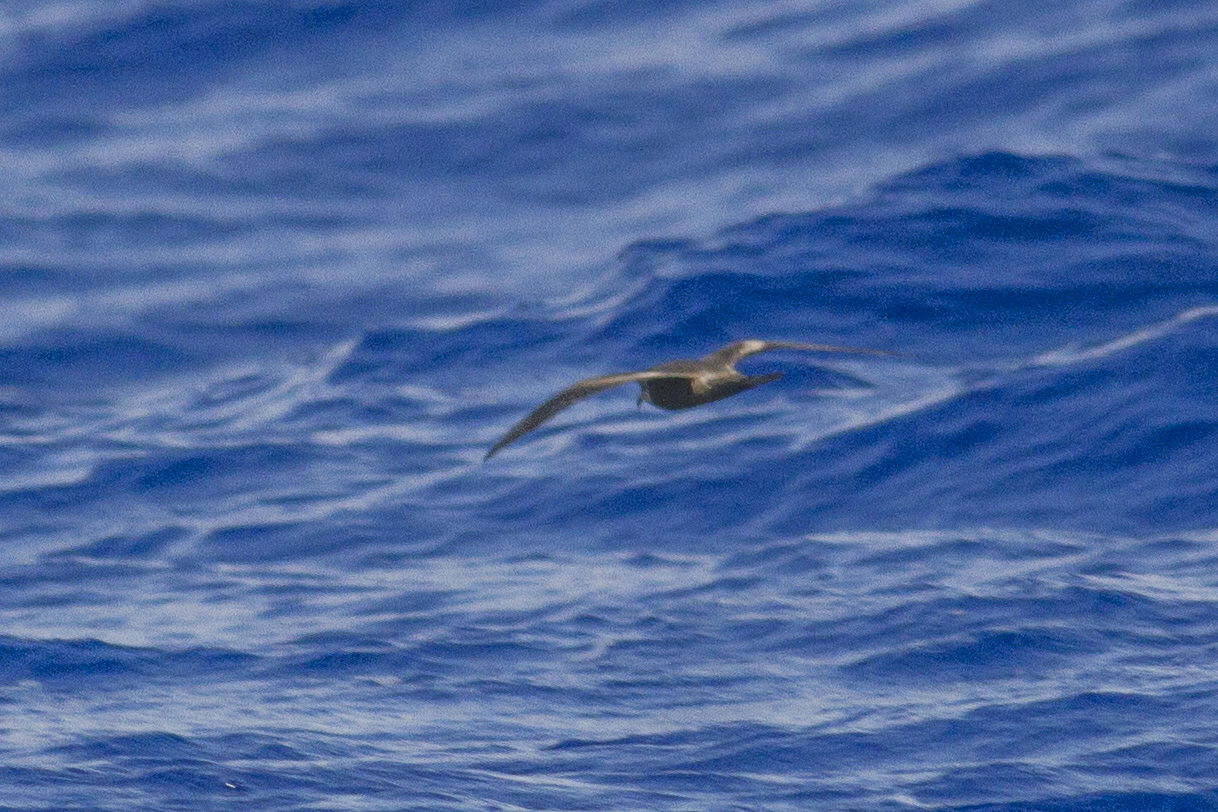Tristram’s Storm-Petrel

Names
- Common: Tristram’s Storm-Petrel
- Scientific: Oceanodroma tristrami
Song
Conservation Status
- NatureServe Heritage Rank G3 – Vulnerable
- North American Waterbird Conservation Plan – High concern
- IUCN Red List Ranking – Near threatened
- Regional Seabird Conservation Plan – USFWS 2005
Species Information
Tristram’s storm-petrel is a large storm-petrel (Family: Hydrobatidae) with long, pointed wings, and a notched tail. Adult males and females are entirely brownish-gray. Flight is typical of storm-petrels, gliding low over water searching for food. Forages alone or with others of the same species, and typically forages at night. Tristram’s storm-petrel feeds by dipping prey from the ocean’s surface on the wing, often pattering the water with feet. In Hawai‘i, diet includes fish, squid, coelenterates, crustaceans, and insects. Tristram’s stormpetrels are winter breeders, and are nocturnal at nesting colonies. Nests are placed in recesses in rocks, under piles of mined guano, or burrows that they excavate under vegetation. Eggs are laid between December through February and nestlings fledge by June. Little information on parental care of egg or young. Like most storm petrels, age at first breeding is likely three to five years and individuals likely live between 15 and 20 years.
Distribution
Tristram’s storm-petrels breed on Nihoa and on all NWHI except for Midway and Kure atolls, although they historically bred on both as well as on MHI. Outside of Hawai‘i, breeding colonies only occur on three small Japanese islands. Outside the breeding season, Tristram’s storm-petrels range across the subtropical central and western Pacific Ocean.
Habitat
Terrestrial: Islands in Hawai‘i and Japan, which include both low-lying coralline sand islands and high volcanic islands. For nesting, prefers recesses in rock scree, under mined guano piles, or burrows excavated under vegetation. Marine: Pelagic.
Threats
- Introduced predators. Like all seabirds, adults and nests are susceptible to predation by rats (Rattus spp.), and feral cats (Felis silvestris). All sites in NWHI are free of rats and cats. Extirpation from Midway and Kure atolls likely the result of the introduction of rats; since the eradication of rats from Midway in 1996, individuals have been mist netted but nesting has not been documented.
- Invasive species. The continued expansion of golden crowned-beard (Verbesina encelioides) on Pearl and Hermes Reef and Kure likely will reduce nesting habitat. The effects of big-headed ants (Pheidole megacephala ), and mice (Mus musculus) on Tristram’s storm-petrels are unknown.
Additional Resources
For more information and references visit the DLNR State Wildlife Action Plan factsheets. DOFAWʻs species pages and State Wildlife Action Plan fact sheets are provided for general information and are not meant to be a citable, original source of data. If you are a student, researcher, or writer looking for a citable source, please explore the references below or find other original data sources, rather than citing these webpages. The references below were provided by the authors of the State Wildlife Action Plan fact sheets at the time of drafting:
- NatureServe. 2003. Downloadable animal data sets. NatureServe Central Databases. Available at: https://www.natureserve.org/getData/vertinvertdata.jsp (March 10, 2005).
- Slotterback JW. 2002. Band-rumped Storm-petrel (Oceandroma castro). In The Birds of North America, No. 673 (Poole A, Gill F, editors.). Philadelphia, (PA): The Academy of Natural Sciences; and Washington DC: The American Ornithologists’ Union.
- U.S. Fish and Wildlife Service. 2005. Regional seabird conservation plan, Pacific Region. U.S. Fish and Wildlife Service, Migratory Birds and Habitat Programs, Pacific Region. Portland, (OR): U.S. Fish and Wildlife Service.


